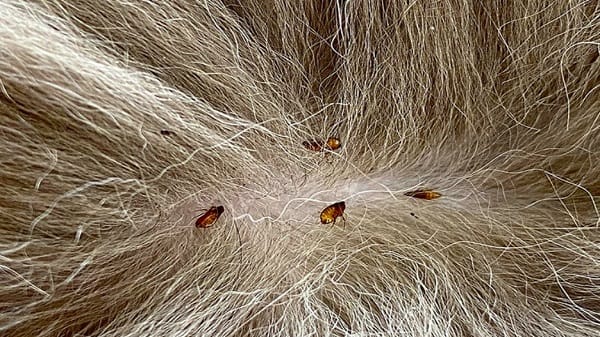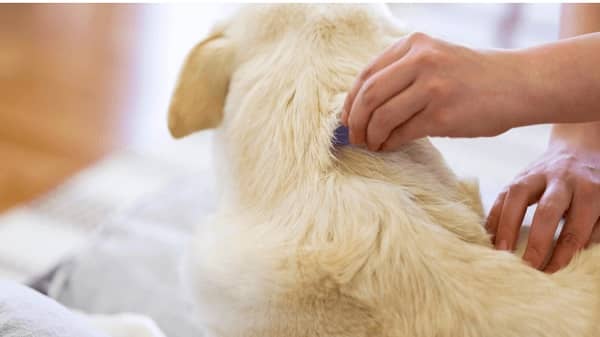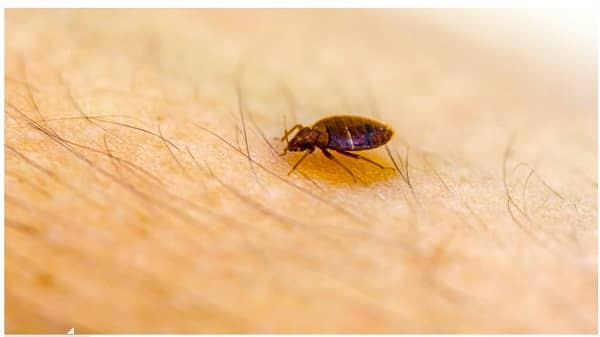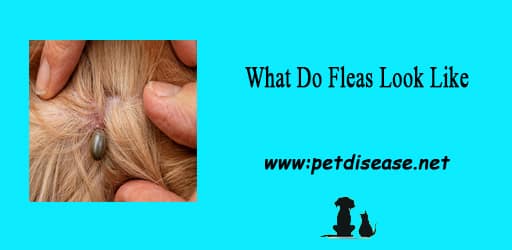Many of you are still wondering What Do Fleas Look Like? Fleas are tiny, blood-sucking parasites that can cause annoyance and discomfort for both humans and their beloved canine companions. These minuscule creatures have a unique appearance that sets them apart from other pests.
In this article, we will explore the physical appearance of fleas, signs of infestation, health risks, and prevention methods, and debunk common myths.
What Do Fleas Look Like: An Overview
Fleas are small, wingless insects that belong to the order Siphonaptera. These pesky parasites have a unique anatomy and lifecycle that enables them to thrive on the blood of mammals and birds. When infesting dogs, fleas can be found in various areas of their body, including the neck, back, tail, and belly.

The Physical Appearance of Fleas
Fleas have distinct physical characteristics that distinguish them from other insects. These minuscule creatures measure only 1-4 millimeters in length, making them barely visible to the naked eye. Here’s a closer look at the physical features of fleas:
Body Structure
Fleas have a flat, reddish-brown body covered in microscopic hairs and spines. This flattened shape allows them to navigate through the fur of their hosts easily. Their compact bodies are perfectly designed for efficiently moving and feeding on their chosen hosts.
Legs and Jumps
One of the most remarkable features of fleas is their powerful legs. Fleas possess hind legs that are significantly longer and stronger than their other legs. These legs are adapted for jumping, allowing fleas to leap impressive distances relative to their size. This extraordinary jumping ability enables fleas to move from host to host efficiently.

Flea Bites on Dogs: Signs and Symptoms
Detecting flea infestations on dogs is crucial for their health and well-being. Fleas can cause itching, discomfort, and even transmit diseases to our canine companions. Here are some signs to look out for:
Scratching and Irritation
Excessive scratching, biting, and licking are common signs that your dog may have fleas. Dogs infested with fleas often exhibit intense itching and irritation due to flea bites and saliva.
Flea Dirt and Eggs
Flea dirt, which is flea excrement, appears as small black specks on your dog’s fur. These specks are actually digested blood and feces left behind by the fleas. You may also notice tiny white eggs resembling grains of salt on your dog’s coat, which are a clear indicator of a flea infestation.
Health Risks and Diseases Associated with Fleas
Fleas can pose significant health risks to dogs. These pests can transmit various diseases and cause allergic reactions. Understanding the potential health risks can help you take appropriate measures to protect your furry friend:
Flea Allergy Dermatitis (FAD)
Some dogs may develop an allergic reaction to flea bites, known as flea allergy dermatitis (FAD). FAD can lead to severe itching, skin irritation, redness, and even secondary infections. Dogs with FAD require immediate treatment and prevention strategies to manage their condition.
Flea-Borne Diseases
Fleas can carry and transmit diseases to dogs, including tapeworm infestations and bacterial infections. These diseases can cause digestive issues, anemia, and overall weakness in affected dogs.

Regular prevention and monitoring are essential for safeguarding your dog’s health.
Prevention and Treatment of Fleas
Preventing fleas is crucial to ensure the well-being of your furry friend. Here are some preventive measures and treatment options to consider:
Regular Grooming and Inspection
Regularly grooming your dog, including brushing their fur, can help you detect fleas or flea dirt early. Thoroughly inspect your dog’s coat, paying close attention to areas where fleas are commonly found, such as the neck, tail, and armpits.
Flea Control Products
Consult with your veterinarian to choose appropriate flea control products for your dog. These may include spot-on treatments, oral medications, flea collars, or sprays. It’s important to follow the instructions provided by your veterinarian and use products specifically designed for dogs.
Myths and Misconceptions about Fleas
There are several myths and misconceptions surrounding fleas on dogs. Let’s address and debunk some of the common misconceptions:
- Myth: Only Outdoor Dogs Get Fleas
Contrary to popular belief, both indoor and outdoor dogs can get fleas. Fleas can be brought indoors on clothing, and shoes, or through open doors and windows. Regular preventive measures are necessary, regardless of your dog’s living arrangements.

- Myth: Fleas Can Be Eliminated by Bathing Alone
While bathing your dog is an important part of flea control, it is not sufficient to eliminate a flea infestation. Fleas and their eggs can survive in the environment, such as carpets, bedding, and furniture. Comprehensive flea control measures are necessary to address the infestation entirely.
FAQ
What do flea bites on dogs look like?
Flea bites on dogs typically appear as small red bumps surrounded by a reddened area.
Dogs may experience itching, scratching, skin irritation around the bite sites, and even the development of skin infections.
What do flea eggs look like?
Flea eggs are tiny objects resembling grains of salt. They are approximately 0.5mm in size and have an oval shape. They are usually white or off-white in color and can be found on your dog’s fur or in their environment.
Can humans get fleas from dogs?
While fleas prefer animals as their hosts, they can bite humans and cause discomfort. However, humans are not suitable hosts for fleas, and infestations in humans are generally short-lived.
What do fleas look like to the human eye?
Fleas appear as tiny reddish-brown insects, typically measuring 1-4 millimeters in length. They have a flat body and are covered in microscopic hairs and spines.
Final Thoughts
Understanding what fleas look like on dogs is crucial for early detection and effective flea control. By familiarizing yourself with the physical appearance and signs of fleas, and implementing effective prevention and treatment methods, you can protect your pets and your home from these pesky parasites. Regular veterinary care, proper grooming, and a clean living environment are key to ensuring your dog’s well-being and keeping fleas at bay.

